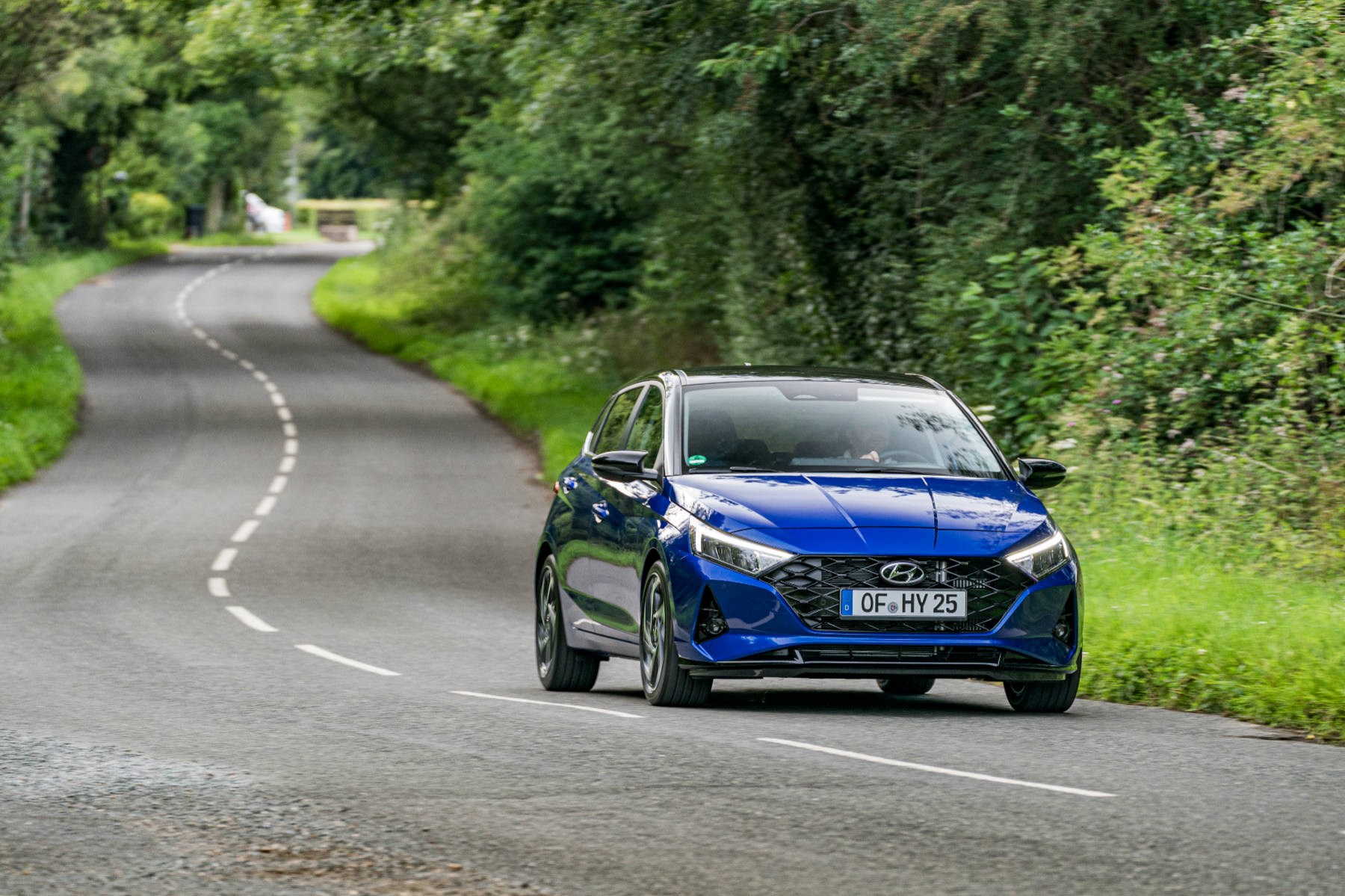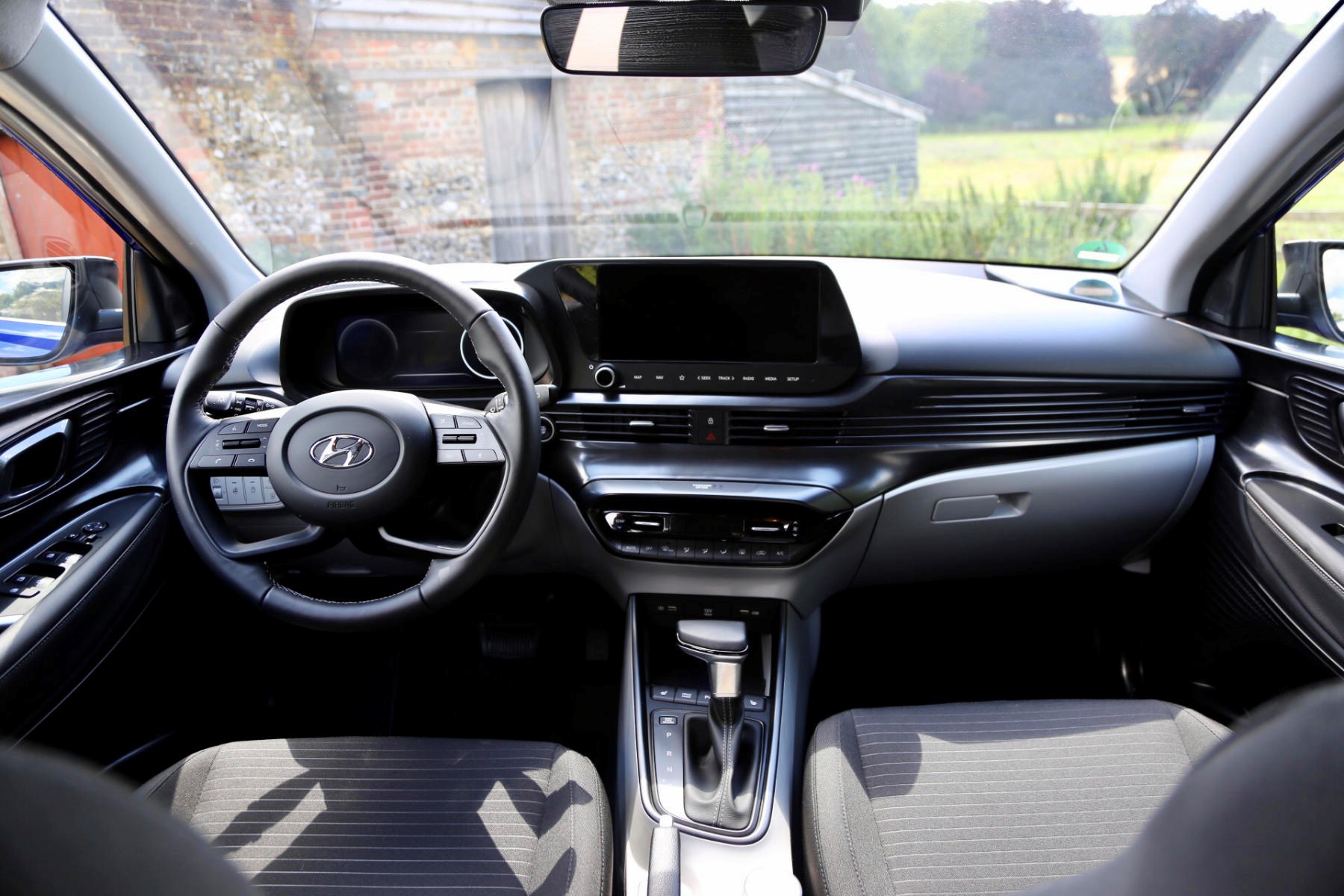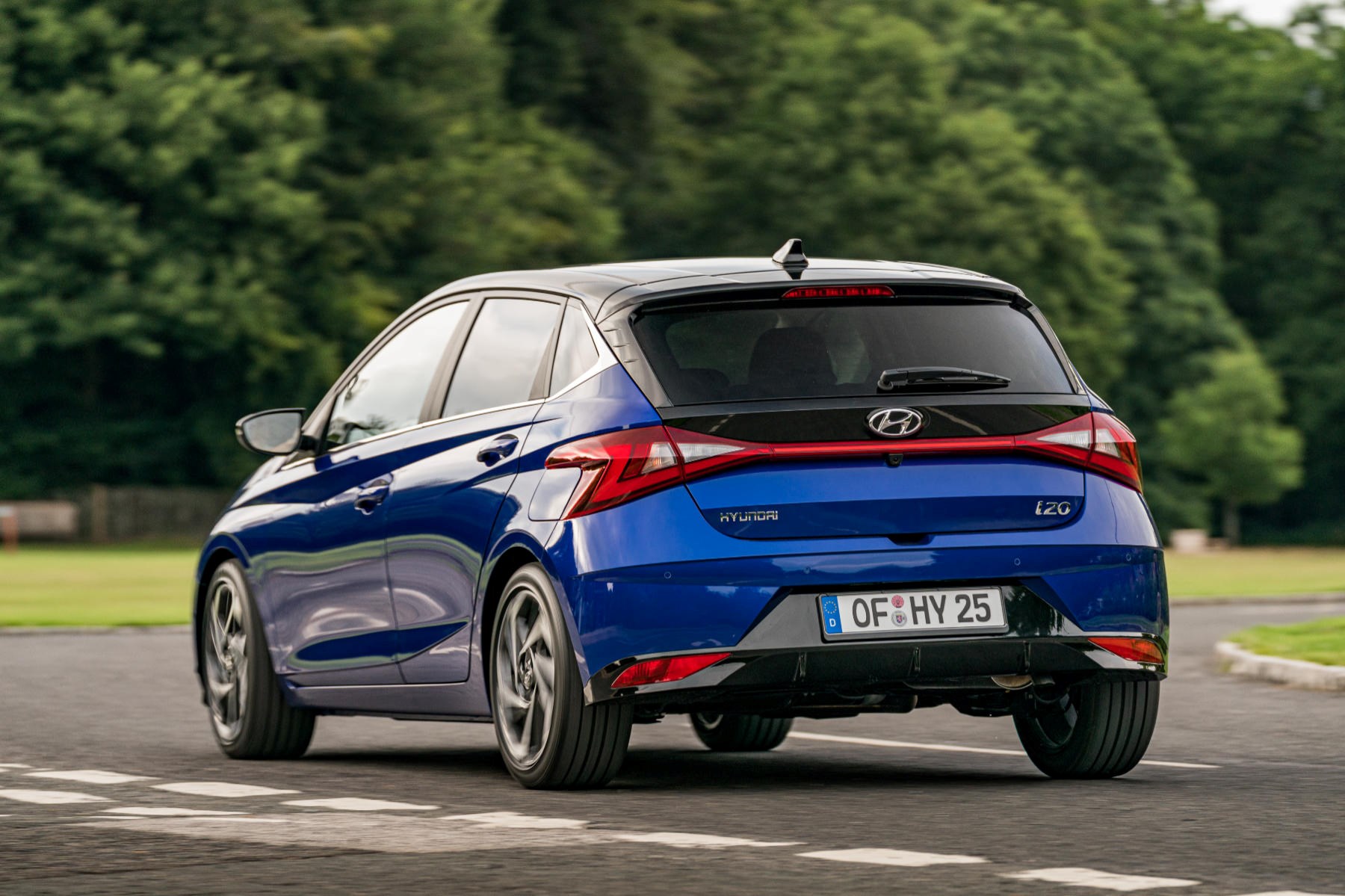► Our first drive of the new Hyundai i20
► Fiesta-sized supermini promises tech and low emissions
► Prices starting from around £16,000, deliveries September/October
You’d be forgiven for forgetting that Hyundai still makes the i20. The i30 is kept at the forefront of people’s minds thanks to the stonking i30N hot-hatch. While you’ve probably seen a few errant i10s hanging around bingo. But the i20 is different. It’s the same size and shape as Britain’s bestseller, the Ford Fiesta, but it sells nowhere near as many. Which goes some way to explaining why you haven’t seen one lately.
And even if you owned one, you’d be forgiven for forgetting what it looks like. It’s blander than eating a cucumber sandwich while watching Songs of Praise. That new, angular, ambitious bodywork is designed to remedy this. Expected to start from around £16,000, this new i20 is replacing the aging current model, in a bid to shake up the B-segment supermini market. It was supposed to be unveiled at the 2020 Geneva Motor Show, but that was cancelled because, well you know.
The big news apart from that new body is that Hyundai is aiming for it to become the most comprehensively connected car in its class, as well as the safest. Plus, it’s available as a mild-hybrid for the first time.
And we’ve driven a pre-production model on UK roads.
Wow that’s different
This third-generation i20 is a radically different design from the outgoing model. It’s supposed to showcase what future Hyundais will look like, and we think it’s a giant leap in the right direction.
First up, unsurprisingly, it’s bigger than the old car. 30mm wider, 5mm longer, and 24mm lower. This of course, is better for boring practical reasons. But another upside is that generally, wider hips mean bigger wheels, which is good for stance. It certainly looks good to us.

Front on, the design features sharper, more distinct lines, while a look around the side reveals its shoulder line, e.g, where the bottom of the window meets the body, is higher than the current car.
Our test model is two-tone, and it looks all the better for it. Hyundai has assured us that unlike with some previous cars, owners won’t be made to wait longer if they opt for this colour scheme. On this theme, there will be 10 colours to choose from with the i20.
The car in the pics is a pre-production model, but this is broadly what N-Line spec cars will look like. Expect base model cars to do without fancy wheels and that natty bodykit.
Let’s talk tech
Inside there are also huge changes afoot. When you step in here, the first thing you clock are the two 10.25-inch screens. One is for the driver display, and it sits right behind the steering wheel. The other is the touchscreen infotainment.
We can’t say too much about the general interior as the car we drove was unfinished (pictured below). Broadly speaking, the huge amount of tech is integrated superbly.
Good news internet commenters – the i20 has physical controls for the heating and ventilation systems. While the drive mode settings, heated seats, and parking sensors are also controlled by proper buttons.

The seven-speed DCT doesn’t use one of those fancy rotary dials that manufacturers love at the moment. Instead, it’s a traditional lever-driven ‘box, with a manual mode that works a bit like a sequential-style gearbox.
No paddles to control the gearchanges on our test car, but UK spec cars may get them in the future.
What do you get for your money? Well, it’s too early to talk spec levels. But, available, on higher-end models presumably, will be wireless Apple CarPlay and Android Auto, wireless charging, rear USB ports, ambient LED lighting, and a Bose sound system.
Hyundai’s hoping to reel in small families with this car, so safety systems are abundant. AEB will be offered, as will blind spot monitoring systems, and pedestrian and cyclist detection software.
Is it any good to drive?
We’ve driven the 1.0-litre three-cylinder 48v mild-hybrid – with 100hp. It works much in the same way as any other mild-hybrid. It recovers energy when braking, and re-uses it under acceleration to take the strain away from the engine. It’s also utilised for coasting. Generally, it’s good for emissions, good for MPG.
The drive modes are the big things to talk about with this engine. There’s eco, comfort, and sport.
These hadn’t been fully calibrated in the car we drove. But, the engine didn’t struggle for power in any of these modes, and despite the fact our car was missing about 40kg of sound deadening, the engine never felt overly loud or coarse.
Regenerative braking in eco mode was hugely powerful, especially for a mild hybrid. Once again, Hyundai is unsure about whether this will stay for production models. But if it does, we can imagine it’ll have to have a profound effect on the economy to be worth the jarring driving experience.

Our model used a seven-speed DCT gearbox, but it’ll also be available as a six-speed manual. This manual is all-new, and uses an electronic clutch to disconnect from the engine when coasting to save yet more fuel. Frugal.
There’s also a 120hp version of the 1.0-litre engine. Although Hyundai is currently unsure about whether it’s coming to the UK or not. It’s possible that both, or just one, of the 1.0-litres will make it over here.
Cheap models will make do with an 82hp 1.2-litre four-pot. This is only available with an old-school five-speed manual and can be found making a living in Hyundai models in the UK right now.
The i20 is being built on a heavily revised (virtually new) platform. It’s hard to gauge whether the suspension is any good because the rebound rates were not dialled in, but we can say the steering felt pretty positive, with good levels of feedback through your hands.
Is bigger better?
The benefits of being a larger car than the outgoing model is that it’s, well, larger. The wheelbase is 10mm longer, meaning rear passengers especially have more legroom.
The boot has grown too. It measures in at 351 litres, a smidge better than the 326 litres of the old car. To put that into perspective, the Ford Fiesta’s boot size is a tiddly 292 litres.
Verdict
In such a crowded marketplace it’s hard to make a car stand out. But Hyundai has gone the extra mile with this new i20.
Prices are yet to be confirmed, but it looks like it will be more expensive than the Ford Fiesta or Volkswagen Polo when it’s released.
It promises to offer more kit than either of these. Add to that the mild-hybrid tech, and it might be enough to tempt some forward thinkers who are sick of the usual supermini suspects. It certainly makes the Fiesta and Polo look a bit old hat.
If it can be even 80% as good as the Fiesta to drive, Ford should be worried.
Check out our Hyundai reviews